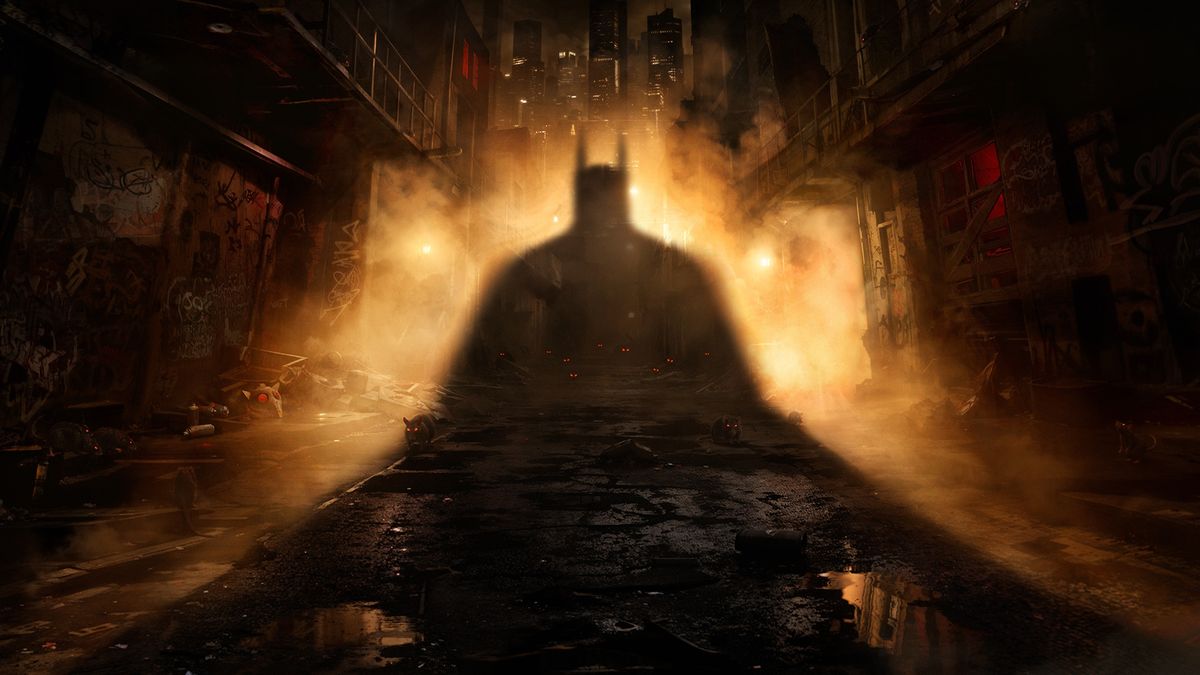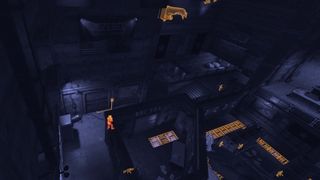Batman: Arkham Shadow channels the best of classic Arkham in VR, sticking surprisingly close to the formula while doing its own thing
Preview | Camouflaj's Batman sequel makes excellent use of VR to revisit the Arkhamverse

The Batman: Arkham series holds a special place in gaming for being one of the definitive Batman experiences and breaking the supposed superhero video game 'curse' that had stuck around for so long. With developer Camouflaj picking up where Rocksteady Studios left off with the upcoming Batman: Arkham Shadow, they're not only aiming to deliver a more fully realized VR experience for the Meta Quest 3 but also give one of the series' most underappreciated entries another chance in the spotlight.
There's been a healthy skepticism from fans online about a VR-focused sequel of another VR-only Arkham game, but from my early hands-on time with Batman: Arkham Shadow, it shows great promise in evoking that same thrill of being the Bat and exploring the underbelly of Gotham City that the Rocksteady games succeeded at. 12DOVE also spoke with Camouflaj head and Batman: Arkham Shadow game director Ryan Payton about making a direct sequel to Batman: Arkham Origins and why Rocksteady's original Arkham Asylum was a core influence on giving Batman a new life in VR.
The Bat's VR comeback


Can you guess which of Bats' adventures topped our ranking of the best Batman games?
2016's Batman: Arkham VR from Rocksteady Studios was the series' first attempt at VR, but while novel, it felt more like an experiment with the budding technology than a full experience. But with Arkham Shadow, developer Camouflaj is building its Arkham Origins sequel as a return to "classic" Batman: Arkham while adapting the full combat, stealth, and investigation experiences into a new dimension.
Building off of the dev's work on Iron Man VR, Arkham Shadow puts a significant focus on capturing the experience of being Batman, right down to getting players to match his many mannerisms to execute actions using the cape to glide or stun enemies, extending your arm to aim the grappling hook, or swiping your arms to toss batarangs. When working on the adaptation to VR, game director Ryan Payton explains that despite challenges with bringing that Arkham experience to VR, some things made for a natural fit for the new medium.
"We actually found that some aspects of the Arkham gameplay adapted well from the flat experience. For instance, the detective vision mapped really well into VR, like to a surprising degree," says Payton. "You activate the detective vision by bringing the right motion control to your right temple and tapping the button, and then you're completely enveloped in the familiar detective vision mode, and it's a nice way of allowing the players to understand very quickly and clearly what to interact with. There were aspects I wasn't convinced at first would translate well into VR, but if anything, I think parts of the game feel even better in VR. You're more a part of this world with VR."
From the opening hour, Arkham Shadow feels like a very deliberate throwback to the structure of Arkham Asylum – except the perspective is entirely in first-person and uses a unique control scheme focusing on motion controls and face buttons from the Quest 3 controllers. It's a different way to engage with a Batman: Arkham experience, but one that got surprisingly intuitive and familiar the more I played.
Arkham Shadow's most significant deviation from the core formula is combat, which now goes for a more tempo- and gesture-based attack flow. As soon as you launch yourself towards the enemy, you have to follow specific patterns for each individual opponent as they can block and counter any careless strikes from you. Finishing moves are now triggered by swiping your controllers up or down to execute grabs or slam attacks. The action in Arkham Shadow makes for intense sessions, and I quickly worked up a sweat.
Comic deals, prizes and latest news
Get the best comic news, insights, opinions, analysis and more!
It took some time to get used to this flow, but when I did it gave me the same sense of satisfaction I got from taking out foes in previous Arkham games. One frustrating aspect was incoming attacks, which require you to jut your forearm in the same manner that Batman does in the Arkham games in the specific direction of an off-screen attack. The counter timing's tricky and awkward to get a handle on in the middle of combat.
While combat is different but still satisfying, the investigation and stealth gameplay in VR are the most engaging and enjoyable sections of Arkham Shadow. The VR stealth in particular functions just like the original games, but with a focus on gesture-based actions. For example, by actually making a grabbing motion with the controllers, you can perform stealth takedowns. It's thrilling to play these sections in VR as executing vertical takedowns and gliding in first-person was so fun to pull off and VR really heightens the tension in stealth; very familiar set-piece sections suddenly feel new with the change of perspective.
Early years and familiar haunts

Making Batman: Arkham Shadow a direct sequel to Arkham Origins, which had such a novel approach to the series, is the most interesting choice the developers made. Arkham Origins brought lesser-known characters into the story and featured a more character-driven plot that showed more genuine pathos to characters like Batman and Joker in ways that its predecessors didn't.
With Arkham Shadows set six months after the end of Arkham Origins and its spin-off Blackgate, Gotham City is under siege by a mysterious organization known as the Cult of the Rat King during the week of the Fourth of July. As crime escalates, Batman (voiced by returning actor Roger Craig Smith) investigates the cult while teaming with Commissioner Gordon and Harvey Dent to find the leader. Along the way, Batman encounters other characters from the Rogues Gallery, including deep-cuts like the Ratcatcher and Lock-Up, who also have a role to play in Gotham's summer of violence.
According to Payton, post-Arkham Origins was a rich era left untapped in the larger Arkhamverse – and it was also an opportunity to revisit one of the Arkham series' most underappreciated games.
"We're committed storytellers, and I always look for character-focused stories and take them to interesting places," says Payton. "The timeline around Origins was such an interesting place. We see Batman as very confident but still in his early years, and he's now made himself more known to Gotham City. It's such an unexplored space compared to the very crowded time of Arkham Asylum and Arkham City, and we had so much breathing room to tell an original story that tapped into what made Origins great while going deeper on returning characters and bringing in some new ones."

"Arkham Shadow is still a promising revisit to everything that made Arkham work in the first place"
Arkham Shadows does revisit some familiar locations and regions of Gotham City, such as the Monarch Theater and its district, but the developers stress that it is not an open world game. It's structured through interconnected zones for a more story-driven experience, to give players more time to fully take in areas for exploration and activities, along with finding hidden collectibles such as the Rat King's radio broadcasts scattered throughout the game.
"I feel like going for a more Arkham Asylum-type experience was an appropriate place for us to go, especially with this being our first Batman game," he says. "Also, fans were ready for a tight, interconnected Arkham Asylum-like experience with a more defined and set area to explore. Even though the franchise just got bigger and bigger in scale, it was a great opportunity for us to have that tighter structure while returning to this Origins era."
In fact, fans might be surprised to learn just how faithful Arkham Shadow is to the formula of an Arkham game. From the opening hour I played, Batman: Arkham Shadow's atmosphere and pacing felt similar to Arkham Asylum and its larger interconnected metroidvania structure, which felt right for the focus on VR gameplay. It's also refreshing to see Batman: Arkham Origins get a direct follow-up, as, in my view, it's low-key the best Arkham game thanks to its tighter cast of characters and a plot that dealt with Batman's steady growth into becoming Gotham's protector.
So far, Batman: Arkham Shadow is shaping up to be a worthy and satisfying continuation of the series. While owning a Meta Quest 3 and one's mileage for enjoying VR games may prove to be a hurdle for many, Arkham Shadow is still a promising revisit to everything that made Arkham work in the first place. It doesn't reinvent the Batwheel, but it does heighten what made the games so great with its change of perspective.
Batman: Arkham Shadow is set to release for the Meta Quest 3 in October 2024. While you wait, you could always check out some of the best VR games.
Alessandro is a freelance writer and editor based in the San Francisco Bay Area who has covered the games, tech, and entertainment industries for more than 13 years. Having previously worked at GameSpot, CNET, and various other outlets writing features and coordinating event coverage, Alessandro enjoys playing games on PC, but also gives plenty of time to his Nintendo Switch. You can find him on various socials at @afillari.
Most Popular








